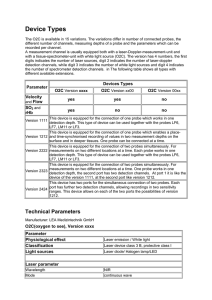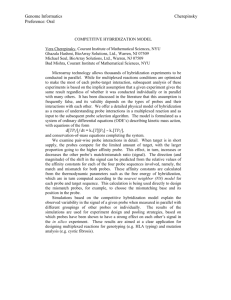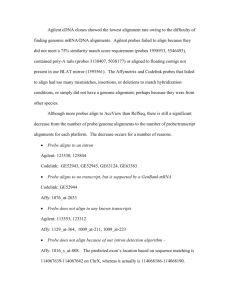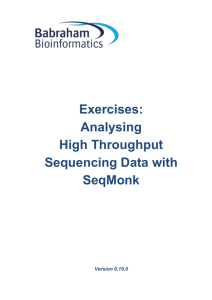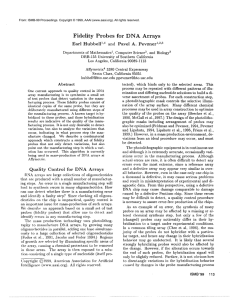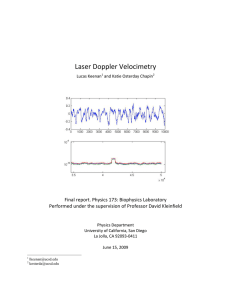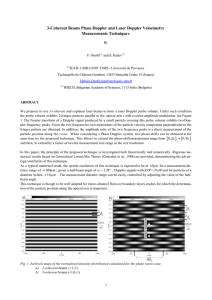Paper 20.1 Superimposed Non Interfering Probes to extend
advertisement
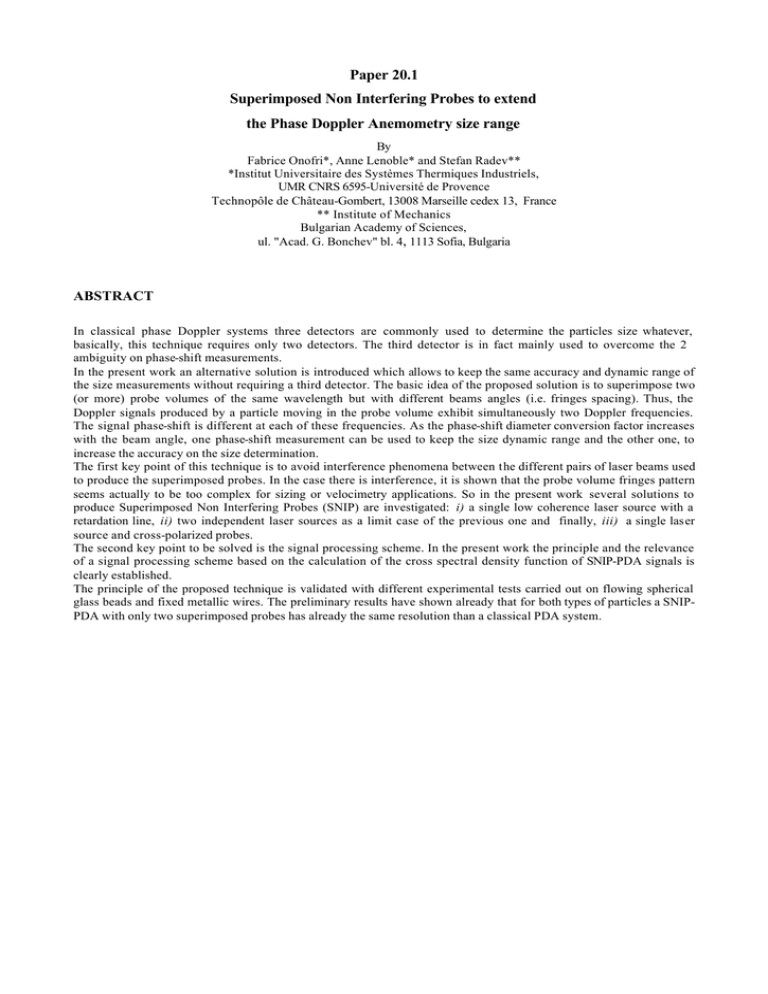
Paper 20.1 Superimposed Non Interfering Probes to extend the Phase Doppler Anemometry size range By Fabrice Onofri*, Anne Lenoble* and Stefan Radev** *Institut Universitaire des Systèmes Thermiques Industriels, UMR CNRS 6595-Université de Provence Technopôle de Château-Gombert, 13008 Marseille cedex 13, France ** Institute of Mechanics Bulgarian Academy of Sciences, ul. "Acad. G. Bonchev" bl. 4, 1113 Sofia, Bulgaria ABSTRACT In classical phase Doppler systems three detectors are commonly used to determine the particles size whatever, basically, this technique requires only two detectors. The third detector is in fact mainly used to overcome the 2 ambiguity on phase-shift measurements. In the present work an alternative solution is introduced which allows to keep the same accuracy and dynamic range of the size measurements without requiring a third detector. The basic idea of the proposed solution is to superimpose two (or more) probe volumes of the same wavelength but with different beams angles (i.e. fringes spacing). Thus, the Doppler signals produced by a particle moving in the probe volume exhibit simultaneously two Doppler frequencies. The signal phase-shift is different at each of these frequencies. As the phase-shift diameter conversion factor increases with the beam angle, one phase-shift measurement can be used to keep the size dynamic range and the other one, to increase the accuracy on the size determination. The first key point of this technique is to avoid interference phenomena between the different pairs of laser beams used to produce the superimposed probes. In the case there is interference, it is shown that the probe volume fringes pattern seems actually to be too complex for sizing or velocimetry applications. So in the present work several solutions to produce Superimposed Non Interfering Probes (SNIP) are investigated: i) a single low coherence laser source with a retardation line, ii) two independent laser sources as a limit case of the previous one and finally, iii) a single laser source and cross-polarized probes. The second key point to be solved is the signal processing scheme. In the present work the principle and the relevance of a signal processing scheme based on the calculation of the cross spectral density function of SNIP-PDA signals is clearly established. The principle of the proposed technique is validated with different experimental tests carried out on flowing spherical glass beads and fixed metallic wires. The preliminary results have shown already that for both types of particles a SNIPPDA with only two superimposed probes has already the same resolution than a classical PDA system.

